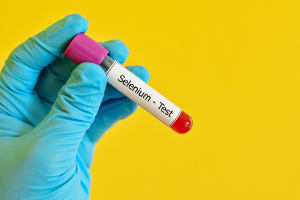Does selenium function as the source of youth?
 There is a lot of evidence to suggest this. Selenium is involved in some unique selenium-containing antioxidants that protect our cells from free radicals, aging processes, and premature cell death. This is highlighted in a new study from Osaka University in Japan, which was conducted on stem cells.
There is a lot of evidence to suggest this. Selenium is involved in some unique selenium-containing antioxidants that protect our cells from free radicals, aging processes, and premature cell death. This is highlighted in a new study from Osaka University in Japan, which was conducted on stem cells.
Many diseases and aging processes are characterized by oxidative stress. This is a condition where potentially harmful free radicals outnumber the protective antioxidants. Free radicals are involved in various metabolic processes, but their activity must be carefully controlled to prevent them from attacking cells and tissues. The impact of free radicals is further increased by aging processes, poor oxygen utilization, smoking, alcohol abuse, heavy metals, medications, stress, and radiation.
One of the most dangerous things is when free radicals attack and destroy lipids such as cholesterol and polyunsaturated fatty acids in cell membranes, a process known as lipid peroxidation. The free radicals also cause chain reactions where they can attack the cells' energy-producing mitochondria, DNA, proteins, and other components. This results in cells not functioning optimally, becoming abnormal, or dying prematurely.
The accumulation of these free radicals, also called ROS (reactive oxygen species), contributes to the development of age-related diseases such as atherosclerosis, cancer, diabetes, metabolic diseases, dementia, and more. Therefore, it is particularly important to be well-supplied with antioxidants that can neutralize free radicals by way of different mechanisms.
Human cells contain 25 different selenium-containing proteins (selenoproteins), several of which function as unique and essential antioxidants that no other antioxidants can replace. These antioxidants counteract lipid peroxidation by neutralizing free radicals.
Selenium deficiency damages blood cells and other cells
The researchers behind the new study also noted that certain blood stem cells called HSCs (hematopoietic stem cells), which develop into red and white blood cells, can also be damaged by oxidative stress and lipid peroxidation during the aging processes.
At the same time, old blood stem cells (HSCs) often exhibit an impaired synthesis of the 25 different selenoproteins. However, it has previously been unclear how this contributes to aging processes in the cells and whether it is possible to slow down this development.
The researchers therefore investigated this further by studying mice that were genetically engineered in a way that disrupted their normal synthesis of selenoproteins.
The researchers then examined how the disrupted synthesis of selenoproteins affected blood stem cells (HSCs) and the formation of other blood cells. They observed a very harmful impact on blood stem cells (HSCs) and a type of white blood cell called B-cells, which are responsible for antibody production and immunity. There was also a less severe negative effect on myeloid cells, which are precursors to mature blood cells.
The most notable result of the disrupted selenoprotein synthesis was a regular B-cell deficiency. Furthermore, the blood stem cells had a reduced ability to renew themselves. According to the researchers' data, the same harmful cellular changes are observed in connection with aging processes. Specific and harmful chain reactions occur when cells lose their ability to synthesize the various selenoproteins.
Overall, the study revealed that selenoproteins function as important antioxidants that protect cells from lipid peroxidation. Furthermore, these selenoproteins are crucial for the renewal of stem cells and for their normal development into red blood cells and various white blood cells. These proteins are also important for all other cells in the body, enabling them to generate energy, carry out their special tasks, and protect themselves against oxidative stress.
The researchers therefore assume that the various selenoproteins can help prevent and combat various age-related diseases.
Risk of chronic diseases and early death reduced with more selenium
The new Japanese study is published in the Blood Journal. It aligns with a larger American population study published in Frontiers in Nutrition, which revealed that higher selenium intake through diet and supplements reduces the risk of cardiovascular diseases, diabetes, metabolic diseases, cancer, and early death. According to this study, the optimal intake of selenium should be higher than 129 micrograms per day. This amount is much higher than the official recommendations (RI), which in Denmark is 75 micrograms for women and 90 micrograms for men. It is also a fact that many people in our part of the world get too little dietary selenium, especially because of the selenium-depleted farmland. Daily doses of 200 micrograms have been used in numerous studies. The safe upper intake limit is 300 micrograms.
References:
Yumi Aoyama et al. Selenoprotein-Mediated Redox Regulation Shapes the Cell Fate of HSCs and Mature lineages. Blood Journal, 2025
Osaka University. Selenoproteins: The fountain of youth? ScienceDaily. 2025
Yuchen Zhang et al. Association of dietary selenium intake with the risk of chronic diseases and mortality in US Adults. Frontiers in Nutrition 2024
Yuchen Zhang et al. Association of dietary selenium intake with the risk of chronic diseases and mortality in US Adults. Frontiers in Nutrition 2024
TIP! See also the related articles
Search for more information...
- Created on .








